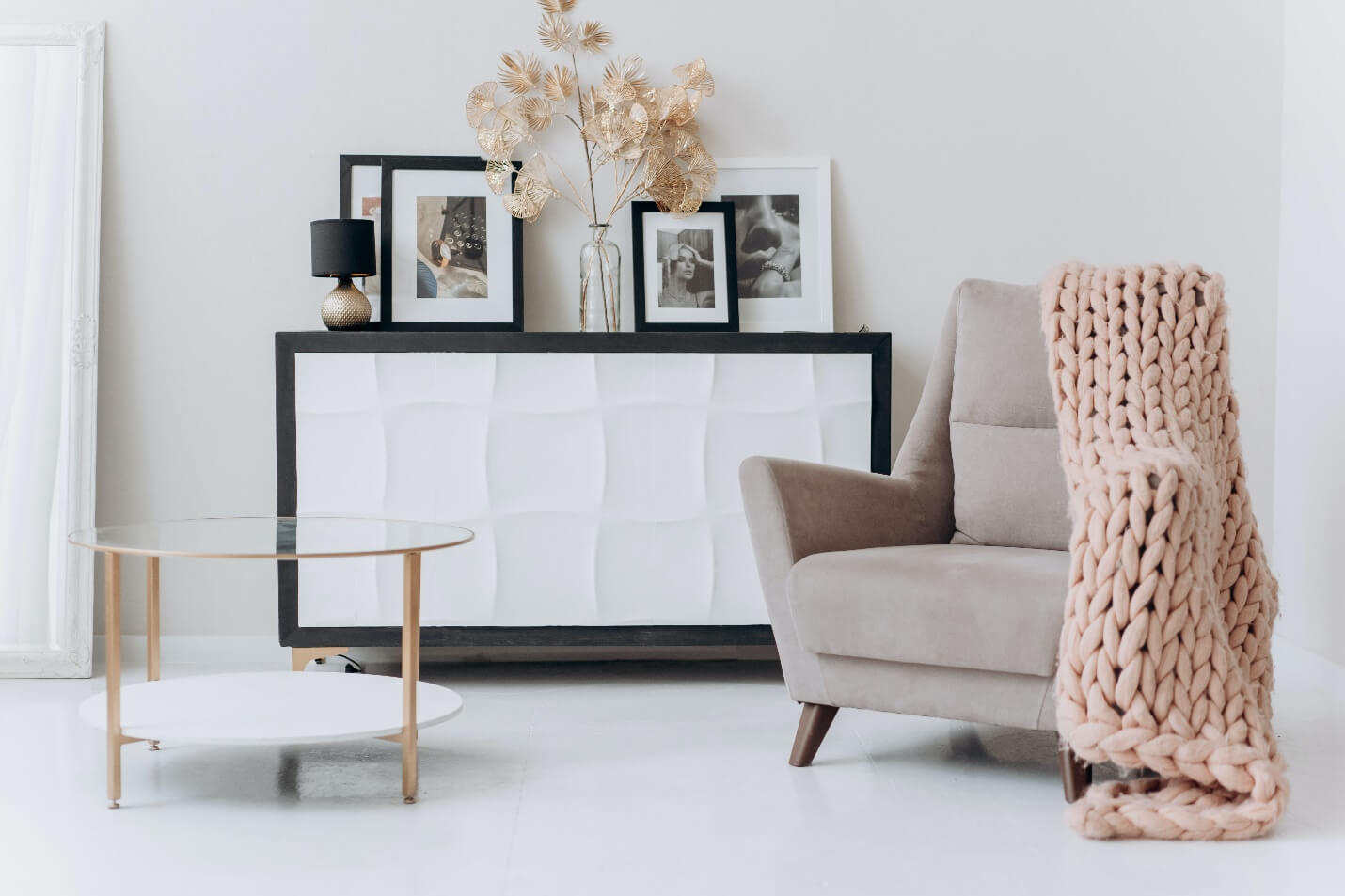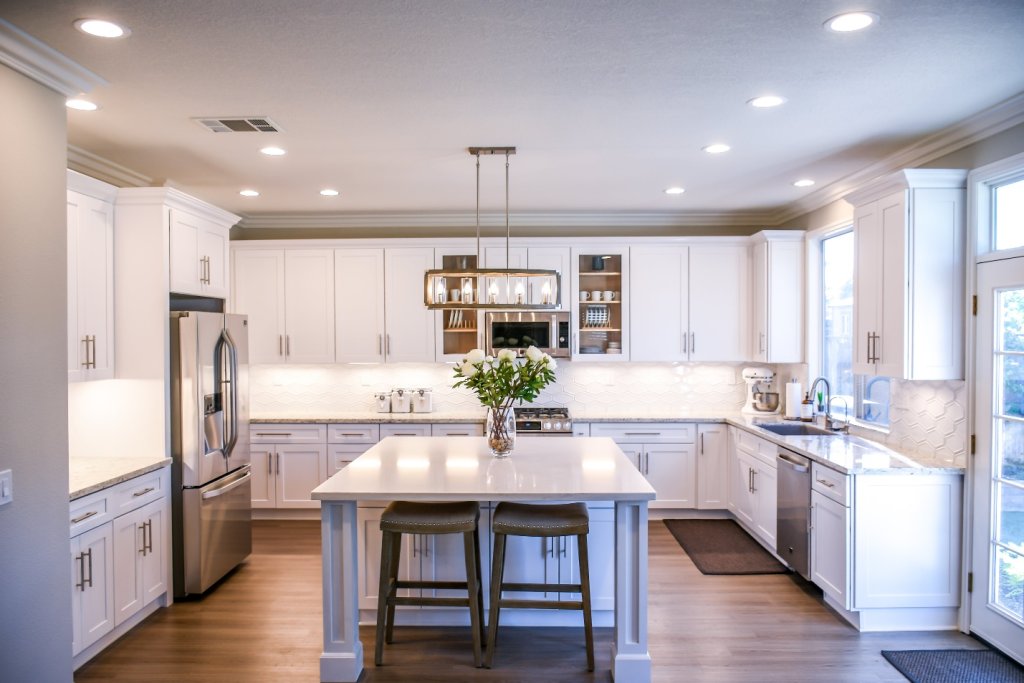Your living space is a canvas that evolves with time. Staying ahead of the trends is key for an interior design concept.
In this concise guide, we navigate the world of design evolution, ensuring your home reflects the contemporary spirit.
Bid farewell to the passé and embrace the future of interior style. Create a space that resonates with timeless elegance. It’s time to redefine your surroundings and let your home speak the language of modern sophistication.
1. All White and Grays

The reign of all-white and grey home décor was once synonymous with modernity. However, it is fading in the wake of evolving design preferences.
Neutral tones, including the art of crafting the perfect shade, offer a timeless appeal. Their overuse, however, has led to a sense of monotony and starkness in contemporary interiors, highlighting the importance of mixing dark tones for deep shades to maintain balance.
Modern design trends are now embracing a more eclectic and vibrant palette. These latest designs incorporate rich colors and diverse textures to infuse personality into living spaces.
A desire for warmth and individuality in home design fuels the shift from the all-white and grey aesthetic. People gravitate towards warmer hues like earthy tones, dark brown accent walls, terracotta, and deep blues to create a cozier, more inviting atmosphere.
Additionally, using natural materials such as wood, stone, and woven textures is gaining prominence, adding a touch of authenticity and connection to the environment.
2. Repeating Patterns
The drawback of repeating patterns lies in their potential to create visual chaos, making it difficult for the eyes to find a focal point. This design approach can quickly make a room feel cluttered and detract from the atmosphere.
Today’s trends lean towards subtle textures, neutral tones, and strategic pops of color. Designers embrace simplicity and balance, opting for clean lines and open spaces. Incorporating natural elements, such as wood and stone, is also gaining popularity, bringing a sense of warmth and authenticity to a space.
By letting go of repeating patterns and embracing these more modern design elements, homeowners can create a timeless and inviting environment that reflects the contemporary aesthetic. Embrace new changes like go out to demo homes, change your diet, or sign up to a college writing service. Something new for inspiration.
3. Distressed Furniture
The appeal of worn and weathered pieces diminishes as contemporary design trends lean towards cleaner lines and sleek aesthetics. Modern-day interior design embraces a more minimalist and refined approach where furniture is functional art.
The charm of distressed furniture lies in its history and character. It can create a cluttered and dated look. Instead, people are gravitating towards furniture with clean finishes and a timeless elegance that complements the simplicity of modern spaces.
Sleek, geometric shapes and neutral color palettes are gaining popularity. Materials like glass, metal, and polished wood are replacing the rough textures of distressed furniture, contributing to a more polished and contemporary aesthetic.
4. Open Concept Everything
We are bidding farewell to the ubiquitous open-concept everything in home décor. This trend is creating a more purposeful and functional approach to interior design. Modern living demands defined spaces that cater to specific activities, fostering a sense of intimacy and privacy.
Consider the rise of multifunctional spaces that blend style and utility seamlessly. From partitioned areas to modular furniture, the shift toward purpose-driven design brings aesthetic appeal and practicality. It marks the end of the era dominated by open-concept living.
5. All-White Everything
The “all-white everything” trend was hailed for its crisp and minimalist aesthetic nature. Slowly, it is fading away. Homeowners are steering clear of the clinical look, opting for warmer, more inviting color palettes. The latest interior designs adopt bold hues and textured elements that evoke personality and warmth.
According to the essaywriter.org review, professional experts show another trend making its exit is the overuse of shiplap. Once a symbol of rustic charm, it’s now considered overdone.
The ubiquitous farmhouse style also gives way to more eclectic, personalized designs. Finally, the era of matchy-matchy furniture sets is ending, with homeowners embracing mix-and-match styles for a more curated, dynamic look.
6. Mass-Produced Anything
The era of mass-produced everything is waning. Homeowners are bidding farewell to generic, one-size-fits-all furnishings and accessories.
A shift towards personalized, artisanal pieces is underway as individuals seek uniqueness in their living spaces. Custom craftsmanship imbues homes with character, supports local artisans, and fosters sustainability.
Consumers are embracing bespoke designs that tell a story and reflect their individual style. As the demand for authenticity rises, the days of assembly line aesthetics are numbered, making room for a more curated and meaningful home environment.
7. Sliding Barn Doors
Their rustic charm was appealing in the past. Now, it clashes with the clean lines and modern aesthetics dominating current interior styles. Design experts note that these doors allow more functional and streamlined alternatives.
Homeowners are now favoring sleek pocket doors and traditional hinged options. These designs emphasize both efficiency and elegance. We assert that the trend is shifting towards a cleaner and more streamlined look, leaving the sliding barn door behind.
8. Tile Countertops
Tiled countertops are declining, akin to the shift from monochromatic schemes to exploring how accent colors, such as pillows for dark brown couches, can transform a space with minimal effort. The growing preference for low-maintenance and seamless alternatives drives the trend’s fade.
Homeowners opt for materials like quartz and granite finish that offer durability without the upkeep associated with tiled surfaces.
Tiled countertops are notorious for harboring bacteria and requiring meticulous cleaning. Hence, most designers replace them with sleek, solid-surface options that blend style with practicality effortlessly.
Closing Thoughts
Your home needs an uplift from traditional designs that we are moving away from: no more open spaces, tiled countertops, or matching furniture sets in your homes. Try adopting soft and relaxed style designs.

